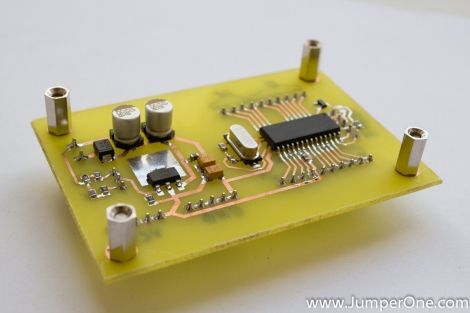
Sometimes, an Arduino just doesn’t have enough horsepower. Whether you’re gathering loads of sensor data and sending it over the web via Ethernet, or just trying to build a home-brew video game, it’s very easy to run into the limitations of the Arduino platform. [Rik] and his fellow classmates may have a solution to this problem with their SimpleCortex development board.
The SimpleCortex began as an answer to the Arduinos [Rik] and his classmates had to use at school. The SimpleCortex gets its name from an ARM Cortex M3 microcontroller running at 120MHz; more than fast enough to do some very interesting things, and 512kB of Flash to hold much larger programs.
The Arduino IDE is admittedly terrible, and big projects are a pain in the butt with a tiny 8-bit micro. SimpleCortex improves upon this development environment by using the free CoCenter IDE put out by CooCox. The CoCenter IDE supports debugging and code completion, standard features on any serious desktop programming environment.
The SimpleCortex has Arduino-compatable header pins, so it should be easy to use existing shields, like the 3G modem we saw this week and the NTSC video IO shield that can do object tracking. While the specs of the SimpleCortex put it in a distant second to the Raspberry Pi, sometimes you just don’t need Linux, but a standard AVR or PIC isn’t quite enough.
There’s no word on when this board will be available, but the team is working with ITead Studio to officially release boards into the wild.













